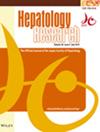Effectiveness and safety of antithrombin for treatment of portal vein thrombosis: Nationwide prospective surveillance of 4 years of clinical experience in Japan
Abstract
Aim
Antithrombin (AT), a plasma protein with anticoagulant properties, has a long-standing medical history, primarily for treatment of congenital AT deficiency. Accumulated clinical experiences suggest AT is a potential anticoagulant for thrombotic diseases. This study aimed to clarify the effectiveness, safety, and clinical significance of AT in portal vein thrombosis (PVT) treatment in clinical practice in Japan, particularly in liver cirrhosis, where bleeding tendencies are increased.
Methods
This prospective, observational post-marketing surveillance study assessed effectiveness and safety of AT in patients with PVT. Data were collected through electronic case report forms at medical institutions across Japan (from February 2018 to January 2021).
Results
Of 680 patients, cirrhosis was the most prevalent underlying disease (79.7%), and the use of concomitant anticoagulants was common (62.8%). In the effectiveness analysis set (N = 477), overall improvement rate after AT administration was 51.2%, reaching 54.1% in patients with class C (severe) cirrhosis. Factors influencing clinical response included AT activity, Child-Pugh score, number of treatment courses, cause of thrombus, and thrombus obstruction. Responders showed a lower cumulative mortality rate versus nonresponders (18.3% vs. 27.6%; p = 0.013); 1-year recurrence rate among responders was 19.3%. In the safety analysis set (N = 680), bleeding events occurred in 5.15% of patients, with 1.32% having major bleeding events.
Conclusions
AT showed promise as an anticoagulant for high-risk PVT cases, especially in liver cirrhosis. Further well-designed comparative studies are needed to verify its efficacy in terms of true endpoints, such as long-term prognosis or improvement in cirrhosis.


 求助内容:
求助内容: 应助结果提醒方式:
应助结果提醒方式:


